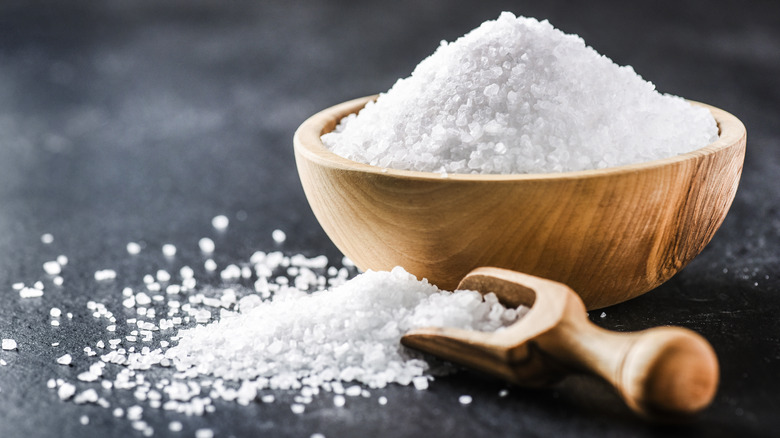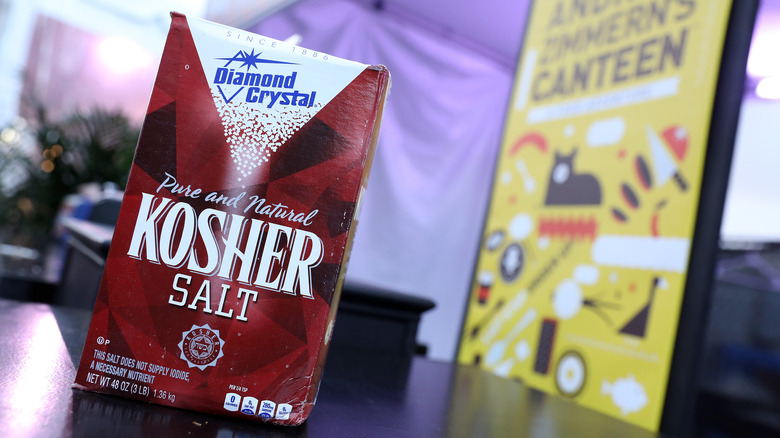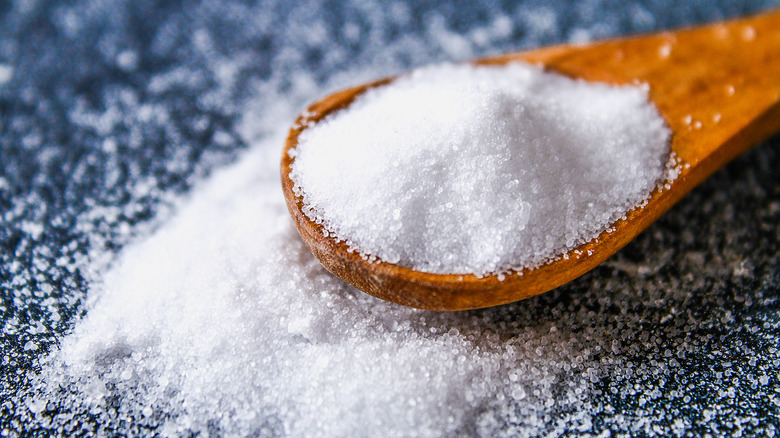What Is A 'Salt Pig'? (And Why It's Time To Throw Away Your Salt Shaker)
It's easy to walk into a kitchen store and be dazzled by a wall of knick-knacks promising to make you a better chef with just one small purchase. There's a fine line between a kitchen gadget and a kitchen tool, however. The difference is how hard the new gadget works once you get it home. There are very few kitchen gadgets that can only do one action that can also qualify as a tool, such as a milk frother or a veggie spiralizer. The rest of them are often wastes of money that take up valuable space on a countertop or clutter up a drawer where you keep tools you actually need. Food Network host and celebrity chef Alton Brown calls these "unitaskers" (via NPR).
If you want to be sure you're buying a useful piece of equipment for your home kitchen, ask someone who works in a professional kitchen. Commercial cooks don't have time and space for any fluff, so they'll be the first to tell you if a banana slicer is a waste of money (spoiler alert, it is — just use a knife).
One thing you'll find on every line cook's station in any restaurant is a container of salt for seasoning — and yes, even pastry chefs have one. These handy tools are known as salt cellars or salt pigs.
Salt cellars, aka 'salt pigs'
Salt pigs are unitaskers that rise to the level of kitchen tools. Even though they only do one thing — keep your salt handy for seasoning as you cook — they do it well. You might be wondering what a salt pig has that a salt shaker doesn't, and the answer is quite a lot.
First of all, hopefully you're seasoning your food as you cook. Seasoning is a process, not a single step, and you should add salt and pepper and spices as you go, tasting along the way to adjust and layer the flavors. Salt, in particular, works over time, and each component needs to be seasoned as you go to get the full flavor. For example, you should always add salt to your pasta water to bring out the savory flavor of your spaghetti and rotini. "Pinching salt with your fingers gives a better sense of how much you might be adding to a dish — at this point, a shaker just feels superfluous," writer Wilder Davies explained to Epicurious.
Second, if you're seasoning with iodized table salt, it's time to switch to Kosher salt like the pros (per The Strategist). Kosher salt can do all kinds of jobs, from curing meats to salt-crusting a whole fish. Most importantly, it's less salty than table salt, so it's much easier to avoid over-seasoning. You can always add more salt if something's under-seasoned, but it's almost impossible to remove too much salt once it's in the dish.
Keep your salt handy for cooking
Because Kosher salt is coarser than table salt, it doesn't work in a shaker, which is where a salt cellar comes in. A salt pig for a home kitchen is typically a curved, ceramic tube that's big enough for you to reach your hand in to grab a pinch (per Epicurious).
The pinching part is important. When you season your food using your hands to measure salt, over time you'll gain an intuitive sense of how much salt to add (per Bon Appétit). When you shake from the shaker, you're a little bit physically disconnected from how much salt you're adding (or not adding). Different salt shakers also have wildly varying openings for the salt to come out, which makes it easy to over-salt accidentally.
Keep your salt pig handy by the stove, and you'll get used to grabbing pinches and tablespoons as you cook, which will make you a better cook overall. Your pig doesn't need to be fancy, however. It just needs to hold about a cup or so of salt, which is enough to season a few meals throughout the week, but not so much that it will get cakey from sitting out too long. The salt stashes in commercial kitchens are usually just a plastic deli container, but there are fancy, ceramic versions of this same tool for home kitchens. You don't need to toss your old salt shaker, however — just save it for the table.


